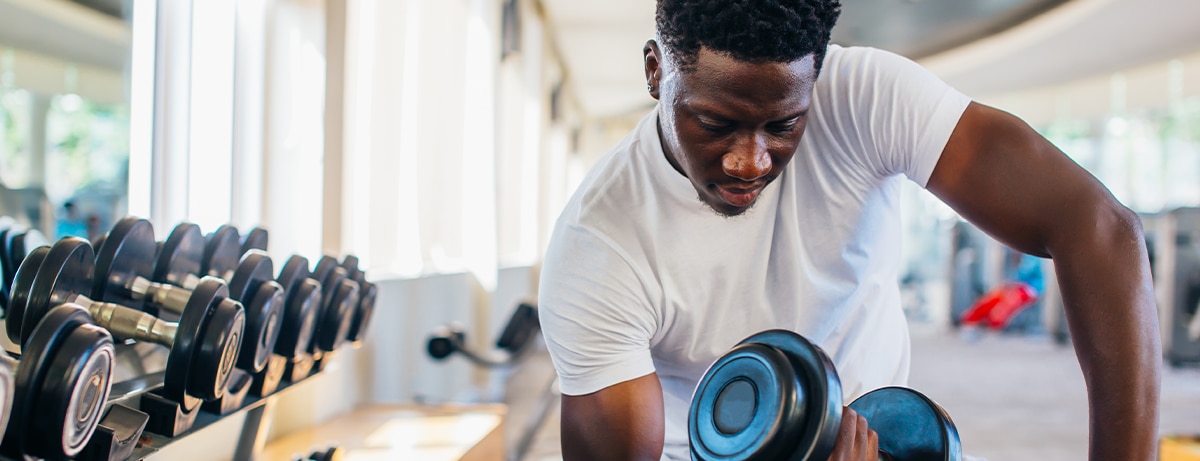15% off £25 or 20% off £35
Code:BASKET
Do you have kyphosis? How to prevent and treat ‘nerd neck’

Kyphosis, also called nerd neck, causes the upper back to curve more than usual. It’s thought that most cases can be treated by strengthening your spine and improving posture.
Summary
1 What is kyphosis?
Kyphosis is when the spine’s curvature is considered excessive, resulting in an abnormal rounding of the upper back...
2What causes kyphosis?
Kyphosis can affect people of all ages for all sorts of reasons. Some types of kyphosis can be developed, whereas others may appear to have a...
3Kyphosis treatment
If you suspect you have kyphosis, you can ask your GP for a physical examination. If your spine straightens when you lie down, you most likely have...
We spend a large chunk of our day looking at our computers, phones, tablets, and other devices. And, unfortunately, our use of technology often has a negative impact on our posture.
Over time, poor posture can lead to a condition called kyphosis – an excessive curvature of the spine that results in the upper back appearing more rounded than normal.1
Kyphosis is treatable for most people who develop the condition due to poor posture.2 In this article, we’ll explore the symptoms of kyphosis, what causes it, how to treat it, and what exercises you can do to prevent and improve symptoms.

What is kyphosis?
Your spine has a natural curvature, which means it isn’t completely straight. Everyone has some degree of curvature in their spine.1
What causes kyphosis?
Kyphosis can affect people of all ages for all sorts of reasons. Some types of kyphosis can be developed, whereas others may appear to have a hereditary element.2,4
The most common type of kyphosis seen in adults and adolescents is postural kyphosis. This is due to consistent poor posture, including frequent slouching or hunching over a device, which can cause the curve in your spine to become more severe.3,5
In a recent study of an extended work-from-home programme during the COVID-19 pandemic, 70.5% of respondents complained of musculoskeletal discomfort triggered by poor posture using their devices.6
It’s thought postural kyphosis can be corrected with changes to posture and spine strengthening exercises.1,2,4,7
Congenital kyphosis is usually present at birth. It occurs as a result of the baby’s spinal column not developing as it should in the womb. Young children are often treated with surgery to correct the condition and prevent it from worsening.1,2,4,8
Scheuermann’s kyphosis is caused by a structural abnormality of the spine. This is when some vertebrae have a triangular rather than a normal rectangular shape, causing a more pronounced forward curvature in the upper back.1,2,9
Scheuermann’s kyphosis is often diagnosed in the teen years before puberty. For severe cases of curvature, surgery is often recommended.2,9,10,11
As you age, you may have a higher risk of developing age-related kyphosis, particularly if you’re a woman.1,11,12
Some of the causes of age-related kyphosis can include:11,13
- decreased muscle mass and strength
- the discs in the spine wearing down
- lower bone mineral density (a particular risk for post-menopausal women)14
- bone fractures
- poor posture
- less physical activity

Kyphosis treatment
If you suspect you have kyphosis, you can ask your GP for a physical examination. If your spine straightens when you lie down, you most likely have postural kyphosis.1
How to correct and prevent kyphosis
Spending a lot of your time looking at your computer, laptop or other devices can contribute to poor posture, leading to postural kyphosis.1-3,5
The final say
Kyphosis is an excessive curvature of the spine that causes the upper back to appear more rounded.1,2
People of all ages can develop postural kyphosis, but you may be more at risk if you have poor posture or spend long hours looking down at your computer or phone.1,2
The good news is that postural kyphosis is thought to be both preventable and easily treated. Minor aches and pains can be treated with over-the-counter painkillers, but be sure to consult your GP if you have excessive pain or experience pins and needles.12
By correcting your posture and doing simple neck flexibility and strengthening exercises, you can treat minor stiffness and pain, and potentially prevent the curve in your spine from getting worse.
The advice in this article is for information only and should not replace medical care. Please check with your GP or healthcare professional before trying any treatments and making any health-related decisions.
- NHS. Overview - Kyphosis [Internet]. 2019 [cited 2024 March 13]. Available from: https://www.nhs.uk/conditions/kyphosis/
- Lam JC, Taif Mukhdomi. Kyphosis [Internet]. Nih.gov. StatPearls Publishing; 2023 [cited 2024 May 9]. Available from: https://www.ncbi.nlm.nih.gov/books/NBK558945/
- NHS Choices. Causes - Kyphosis [Internet]. 2024 [cited 2024 May 9]. Available from: https://www.nhs.uk/conditions/kyphosis/causes/
- Roongtip Duangkaew, Bettany‐Saltikov J, Paul van Schaik, Kandasamy G, Hogg J. PROTOCOL: Exercise interventions to improve back shape/posture, balance, falls and fear of falling in older adults with hyperkyphosis: A systematic review. Campbell systematic reviews [Internet]. 2020 Jul 12 [cited 2024 May 9];16(3). Available from: https://www.ncbi.nlm.nih.gov/pmc/articles/PMC8356308/
- Abd-Eltawab AE, Ameer MA. The efficacy of Theraband versus general active exercise in improving postural kyphosis. Journal of bodywork and movement therapies [Internet]. 2021 Jan 1 [cited 2024 May 9];25:108–12. Available from: https://www.sciencedirect.com/science/article/abs/pii/S1360859220302023#bib19
- Susilowati IH, Kurniawidjaja LM, Nugraha S, Nasri SM, Pujiriani I, Hasiholan BP. The prevalence of bad posture and musculoskeletal symptoms originating from the use of gadgets as an impact of the work from home program of the university community. Heliyon. 2022 Oct;8(10):e11059. Available from: https://doi.org/10.1016/j.heliyon.2022.e11059
- Armin Zećirović, Bojan Bjelica, Lazar Pajović, Nikola Aksović. Postural Status And Kyphosis In School-Age Children [Internet]. ResearchGate. unknown; 2021 [cited 2024 May 9]. Available from: https://www.researchgate.net/publication/356633770_Postural_Status_And_Kyphosis_In_School-Age_Children
- Wang S, Kahaer Aikenmu, Zhang J, Qiu G, Guo J, Zhang Y, et al. The aim of this retrospective study is to evaluate the efficacy and safety of posterior-only vertebral column resection (PVCR) for the treatment of angular and isolated congenital kyphosis. European spine journal [Internet]. 2015 Dec 11 [cited 2024 May 9];26(7):1817–25. Available from: https://link.springer.com/article/10.1007/s00586-015-4344-9
- Sardar ZM, Ames RJ, Lenke L. Scheuermann’s Kyphosis: Diagnosis, Management, and Selecting Fusion Levels. Journal of the American Academy of Orthopaedic Surgeons [Internet]. 2019 May 15 [cited 2024 May 9];27(10):e462–72. Available from: https://pubmed.ncbi.nlm.nih.gov/30407981/
- Sebaaly A, Farjallah S, Kharrat K, Kreichati G, Daher M. Scheuermann’s kyphosis: update on pathophysiology and surgical treatment. EFORT Open Reviews. 2022 Nov 1;7(11):782–91. Available from: https://www.ncbi.nlm.nih.gov/pmc/articles/PMC9780615/
- Roghani T, Zavieh MK, Manshadi FD, King N, Katzman W. Age-related hyperkyphosis: update of its potential causes and clinical impacts—narrative review. Aging clinical and experimental research [Internet]. 2017 Aug 1;29(4):567–77. Available from: https://www.ncbi.nlm.nih.gov/pmc/articles/PMC5316378/
- Mattia Zappalá, Lightbourne S, Heneghan NR. The relationship between thoracic kyphosis and age, and normative values across age groups: a systematic review of healthy adults. Journal of orthopaedic surgery and research [Internet]. 2021 Jul 9 [cited 2024 May 9];16(1). Available from: https://josr-online.biomedcentral.com/articles/10.1186/s13018-021-02592-2
- Anderson DE, D’Agostino JM, Bruno AG, Demissie S, Kiel DP, Bouxsein ML. Variations of CT-Based Trunk Muscle Attenuation by Age, Sex, and Specific Muscle. The journals of gerontology Series A, Biological sciences and medical sciences [Internet]. 2012 Aug 17 [cited 2024 May 9];68(3):317–23. Available from: https://www.ncbi.nlm.nih.gov/pmc/articles/PMC3605905/
- Endocrine Society. Menopause and Bone Loss [Internet]. 2022 [cited 2024 March 13]. Available from: https://www.endocrine.org/patient-engagement/endocrine-library/menopause-and-bone-loss
- Koelé MC, Lems WF, Willems HC. The Clinical Relevance of Hyperkyphosis: A Narrative Review. Frontiers in Endocrinology. 2020 Jan 24;11(5). Available from: https://www.ncbi.nlm.nih.gov/pmc/articles/PMC6993454/
- Gülçimen Soylu, Güzin Çakmak, Yusuf Yalvaç, Zeynel Abidin Öztürk. Effect of age-related hyperkyphosis on depression and quality of life. PubMed [Internet]. 2023 Jan 1;14(1):31–6. Available from: https://www.ncbi.nlm.nih.gov/pmc/articles/PMC9878910/
- NHS Choices. Treatment - Kyphosis [Internet]. 2024 [cited 2024 May 9]. Available from: https://www.nhs.uk/conditions/kyphosis/treatment/
- NHS Choices. Flexibility exercises [Internet]. 2024 [cited 2024 May 9]. Available from: https://www.nhs.uk/live-well/exercise/flexibility-exercises/
- Health and Safety Executive. Good posture when using display screen equipment [Internet]. [cited 2024 March 13]. Available from: https://www.hse.gov.uk/msd/dse/good-posture.htm












